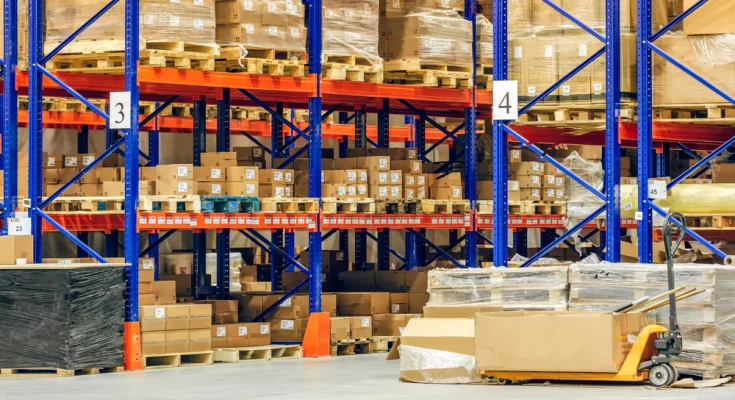The modern warehouse isn’t just about storage anymore, and every racking system NTL Storage solution tells a story about efficiency, survival, and the relentless pursuit of space optimisation that defines Singapore’s industrial landscape. Behind the gleaming facades of distribution centres across the island, a quiet revolution unfolds daily as businesses grapple with an uncomfortable truth: conventional storage methods are no longer sufficient.
The Space Dilemma That Nobody Discusses
Walk into any warehouse in Singapore and witness the harsh arithmetic of modern commerce. Floor space costs mount whilst inventory demands surge. Traditional storage approaches consume precious square footage with the ruthless efficiency of urban sprawl, leaving businesses trapped between expanding operations and escalating property costs.
The mathematics are unforgiving. A standard warehouse storing goods horizontally utilises merely thirty per cent of available cubic space. The remaining seventy per cent of vertical capacity sits idle, representing thousands of dollars in wasted potential. This isn’t inefficiency; it’s systematic waste disguised as conventional practice.
“If a racking system is not in place, it limits the company’s ability to stay organised and efficient”, according to industry analysis. Yet countless operations persist with outdated storage methodologies, unaware of alternatives that could transform their operational capacity overnight.
The Vertical Storage Revolution
Modern storage rack solutions challenge this waste through strategic vertical exploitation. Professional installation transforms underutilised height into productive storage real estate, often doubling or tripling capacity within existing footprints.
The most effective warehouse storage systems employ sophisticated engineering principles:
- Selective pallet storage: Provides direct access to every stored item whilst maximising vertical space utilisation
- Drive-through configurations: Eliminates unnecessary aisle space, converting walkways into additional storage positions
- Double deep arrangements: Stores two pallets per bay, increasing density without sacrificing accessibility
- Very narrow aisle systems: Reduce corridor width to create additional storage lanes
These aren’t merely storage solutions; they’re spatial mathematics applied to commercial reality.
Singapore’s Industrial Storage Landscape
Singapore’s unique industrial environment demands specialised approaches to warehouse optimisation. Limited land availability forces businesses to extract maximum value from every square metre. The island’s tropical climate requires robust materials resistant to humidity and temperature fluctuations.
“Singapore offers various warehouse-racking solutions to cater to diverse industry requirements”, according to industry reports. Yet many operators remain unaware of advanced systems designed specifically for local conditions.
Heavy-duty configurations accommodate Singapore’s diverse industrial sectors, from electronics manufacturing to food distribution. These systems support substantial loads whilst maintaining accessibility for rapid inventory turnover, essential in just-in-time supply chains.
The Hidden Costs of Poor Storage Planning
Inadequate storage systems extract hidden penalties from operations through multiple channels. Labour costs escalate when workers spend excessive time locating inventory scattered across inefficient layouts. Order fulfilment delays damage customer relationships and competitive positioning.
Product damage increases when goods lack proper support structures. Insurance premiums rise due to safety concerns in poorly organised facilities. These costs compound quietly, creating drag on profitability that many businesses attribute to market conditions rather than internal inefficiencies.
A comprehensive racking system – NTL Storage assessment reveals these hidden expenses with uncomfortable clarity. The true cost of maintaining outdated storage approaches often exceeds the investment required for modern alternatives.
Implementation Strategies That Work
Effective transition to optimised storage requires systematic planning rather than piecemeal upgrades. Professional assessment identifies specific requirements based on inventory characteristics, handling equipment, and operational workflows.
The implementation process demands careful attention to safety regulations and building codes. Singapore’s regulatory environment requires compliance with specific load-bearing standards and fire safety protocols. Professional installation ensures adherence to these requirements whilst maximising system performance.
Proper training enables staff to utilise new systems effectively. Many implementations fail not through equipment deficiencies but through inadequate user education. Workers accustomed to ground-level storage require guidance to operate safely within vertical environments.
Measuring Real Return on Investment
Storage system investments generate returns through multiple channels beyond obvious space savings. Improved inventory accuracy reduces stock holding requirements and minimises obsolescence costs. Faster picking operations enable higher throughput without additional labour.
Enhanced safety features reduce accident rates and associated insurance costs. Better organisation facilitates inventory rotation, reducing waste in perishable goods sectors. These benefits accumulate over time, often justifying system costs within months rather than years.
The most sophisticated storage rack solutions integrate with warehouse management systems, enabling real-time inventory tracking and automated reporting. This technology integration transforms storage from passive warehousing into active inventory management.
Future Proofing Storage Operations
Singapore’s industrial evolution demands storage solutions capable of adapting to changing requirements. Modular systems accommodate business growth without requiring complete replacement. Adjustable configurations respond to shifting inventory profiles as companies diversify product ranges.
Automation compatibility ensures systems remain relevant as robotic handling equipment becomes standard. Forward-thinking storage rack design incorporates space for automated guided vehicles and robotic picking systems anticipated in Singapore’s smart factory initiatives.
The convergence of storage efficiency and technological advancement creates opportunities for businesses prepared to embrace systematic change. Those clinging to conventional approaches face inevitable obsolescence as competitors leverage advanced storage capabilities.
Singapore’s warehouse operators stand at a crossroads between traditional inefficiency and systematic optimisation. The choice isn’t merely about storage; it’s about competitive survival in an environment where every square metre carries premium value. The businesses that thrive will be those that recognise storage as strategic infrastructure rather than necessary overhead, implementing a comprehensive racking system – NTL Storage solutions that transform operational capacity and deliver sustainable competitive advantage through intelligent space utilisation.




